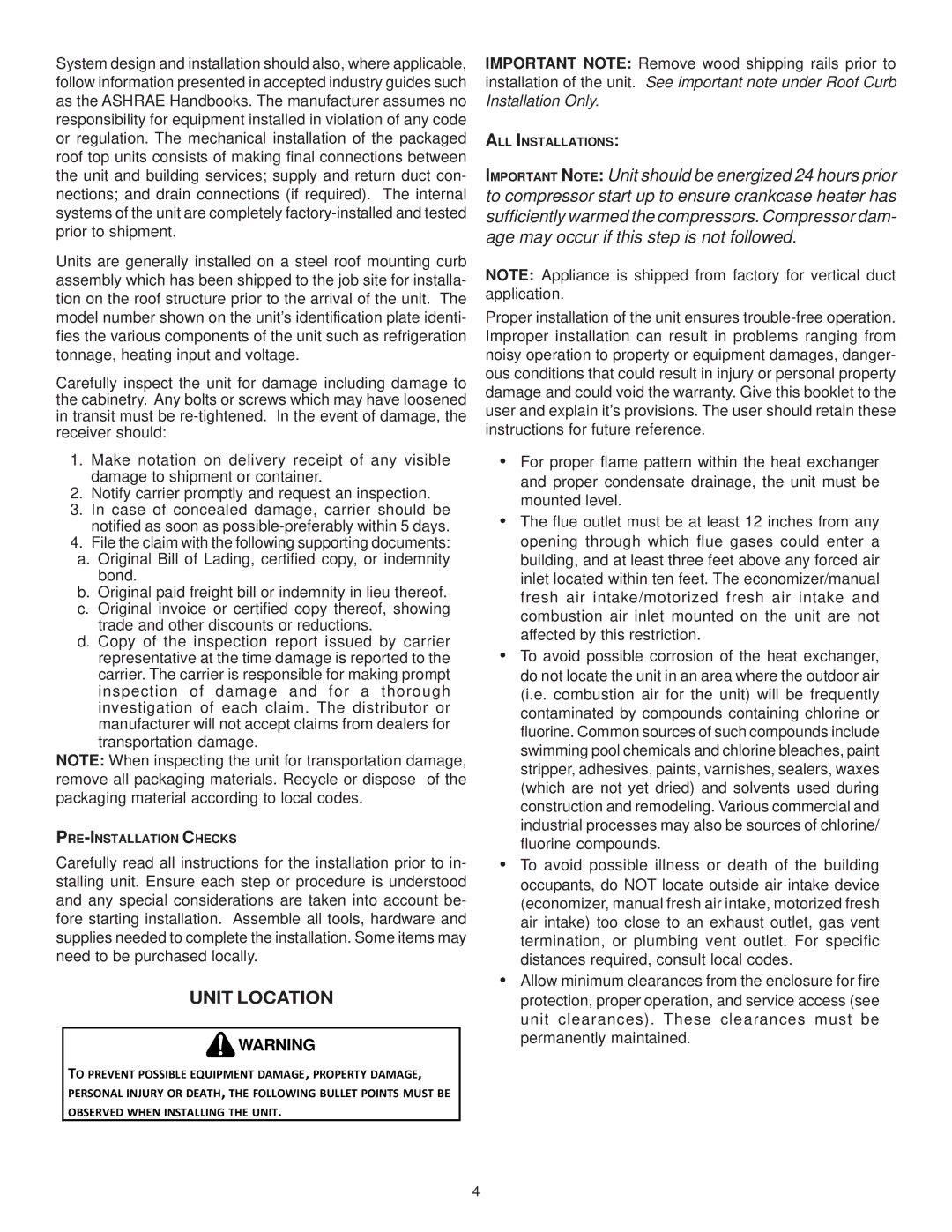ANSI Z21.47CSA-2.3 specifications
Goodman Manufacturing's ANSI Z21.47/CSA 2.3 standard is pivotal in ensuring safety and performance in gas appliances and their components. This industry benchmark outlines rigorous safety regulations for residential gas conversion appliances, specifically focusing on categories like storage water heaters, pool heaters, and certain types of boilers.One of the main features of Goodman’s offering under this standard is its emphasis on user safety. The ANSI Z21.47/CSA 2.3 certification mandates the implementation of robust safety mechanisms to prevent accidents associated with gas leaks or malfunctions. This includes enhanced safety controls and features that mitigate the risk of combustion-related incidents, ensuring peace of mind for both manufacturers and consumers.
Technologically, Goodman Mfg has integrated advanced electronic ignition systems into its products, eliminating the need for pilot lights while enhancing energy efficiency. This technology not only reduces the risk of accidental fires but also contributes to lower energy consumption, making it an environmentally friendly option. Additionally, models compliant with this standard often incorporate smart technology, allowing for remote monitoring and control. This feature further enhances user convenience and energy management, granting homeowners the ability to optimize their energy usage.
In terms of construction and design characteristics, Goodman’s appliances are built to withstand varied operating conditions. They are designed with high-quality materials that provide durability and reliability over time, essential for maintaining performance and safety. These appliances typically feature built-in corrosion protection mechanisms to prolong their lifespan, especially in humid or corrosive environments.
Moreover, Goodman’s adherence to the ANSI Z21.47/CSA 2.3 standard signifies their commitment to energy efficiency, aligning with modern-day sustainability goals. Appliances that meet this standard often exceed governmental energy efficiency mandates, making them a wise investment for consumers aiming to reduce their carbon footprint while enjoying high-performance utility.
In conclusion, Goodman Manufacturing’s adherence to ANSI Z21.47/CSA 2.3 marks a significant dedication to safety, efficiency, and innovation in the gas appliance sector. Through advanced technologies, robust safety features, and a commitment to user satisfaction, Goodman continues to set the standard for excellence in home heating and water heating solutions.

